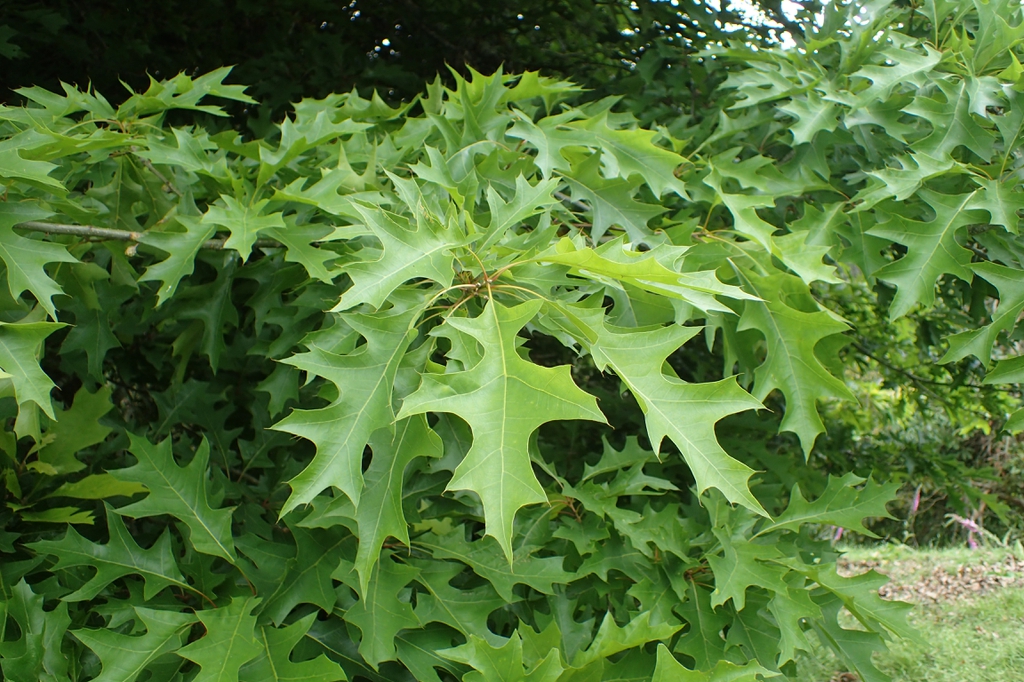Nuttall Oak (Quercus texana)
$30.00 – $90.00
Share
Description
Culture
Best grown in rich, moist, acidic loams in full sun. Adapts to a wide variety of soil conditions including heavy clay soils.
Noteworthy Characteristics
Quercus texana is a deciduous oak that typically grows in wet, heavy, bottomland soils in floodplain forests in the Mississippi River valley from far western Kentucky, the southern tip of Illinois and the southeastern lowlands region of Missouri (the Bootheel) south to Louisiana and along the Gulf Coast from Alabama to Texas. It grows 50-80’ tall with a wide-spreading, rounded crown. Insignificant yellowish-green flowers in separate male and female catkins appear in spring shortly after the leaves emerge. Fruits are oval acorns (to 1¼” long) with scaly cups. Dark green leaves (4-8” long) are deeply divided into 6-11 spiny, pointed lobes. Axillary tufts of tomentum on the lower surface vein angles are distinctive. Gereral leaf shape is reminiscent of the closely related pin oaks and schumard oaks. Fall color comes late, but often includes quality shades of red. Q. texana as currently described is synonymous with and formerly known as Q. nuttallii, Q. nuttallii var. cachensis, Q. rubra var. texana, Q. shumardii var. microcarpa and Q. shumardii var. texana. Unfortunately, nomenclature and common names for this tree have become considerably confused over time.
Genus name comes from the classical Latin name for oak trees.
Specific epithet means of Texas.
Gorgeous Fall Color, and truly a fine long lived specimen.
Garden Uses
Large shade tree. Needs a large space in which to grow. A good selection for low areas wi
Additional information
| size | 15-gallon, 3-gallon, 7-gallon |
|---|
Related products
-
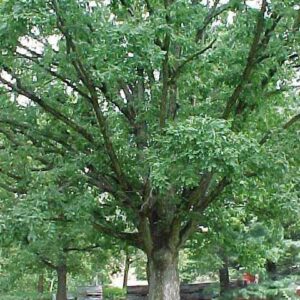
White Oak (Quercus alba)
Select options This product has multiple variants. The options may be chosen on the product page -
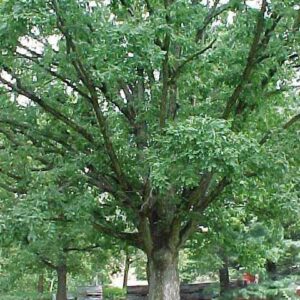
Chinkapin Oak (Quercus muehlenbergii)
Select options This product has multiple variants. The options may be chosen on the product page -
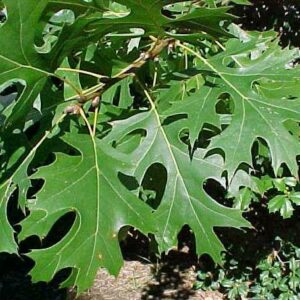
Shumard oak (Quercus shumardii)
$30.00 Add to cart -
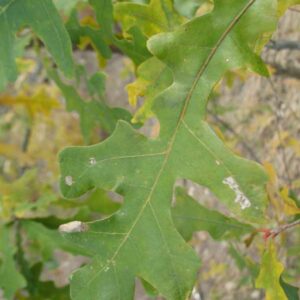
Overcup Oak (Quercus lyrata)
$30.00 – $90.00 Select options This product has multiple variants. The options may be chosen on the product page

